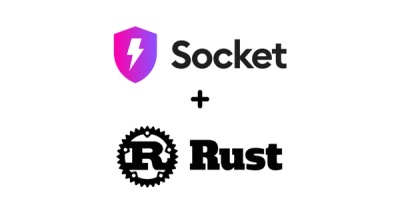
Research
/Security News
Critical Vulnerability in NestJS Devtools: Localhost RCE via Sandbox Escape
A flawed sandbox in @nestjs/devtools-integration lets attackers run code on your machine via CSRF, leading to full Remote Code Execution (RCE).
passport-linkedin-oauth2
Advanced tools
A simple Passport strategy for LinkedIn OAuth2 that works with lite profile.
npm install passport-linkedin-oauth2
Register the strategy
var LinkedInStrategy = require('passport-linkedin-oauth2').Strategy;
passport.use(new LinkedInStrategy({
clientID: LINKEDIN_KEY,
clientSecret: LINKEDIN_SECRET,
callbackURL: "http://127.0.0.1:3000/auth/linkedin/callback",
scope: ['r_emailaddress', 'r_liteprofile'],
}, function(accessToken, refreshToken, profile, done) {
// asynchronous verification, for effect...
process.nextTick(function () {
// To keep the example simple, the user's LinkedIn profile is returned to
// represent the logged-in user. In a typical application, you would want
// to associate the LinkedIn account with a user record in your database,
// and return that user instead.
return done(null, profile);
});
}));
and then authenticate as:
app.get('/auth/linkedin',
passport.authenticate('linkedin', { state: 'SOME STATE' }),
function(req, res){
// The request will be redirected to LinkedIn for authentication, so this
// function will not be called.
});
the login callback:
app.get('/auth/linkedin/callback', passport.authenticate('linkedin', {
successRedirect: '/',
failureRedirect: '/login'
}));
See this for details on LinkedIn API.
state paramThe state param is used to prevent CSRF attacks, and is required by the LinkedIn API. You can ask Passport to handle the sending and validating of the state parameter by passing state: true as an option to the strategy:
var LinkedInStrategy = require('passport-linkedin-oauth2').Strategy;
passport.use(new LinkedInStrategy({
clientID: LINKEDIN_KEY,
clientSecret: LINKEDIN_SECRET,
callbackURL: "http://127.0.0.1:3000/auth/linkedin/callback",
scope: ['r_emailaddress', 'r_liteprofile'],
state: true
}, function(accessToken, refreshToken, profile, done) {
// asynchronous verification, for effect...
process.nextTick(function () {
// To keep the example simple, the user's LinkedIn profile is returned to
// represent the logged-in user. In a typical application, you would want
// to associate the LinkedIn account with a user record in your database,
// and return that user instead.
return done(null, profile);
});
}));
and then authenticate as:
app.get('/auth/linkedin',
passport.authenticate('linkedin'),
function(req, res){
// The request will be redirected to LinkedIn for authentication, so this
// function will not be called.
});
If you have found a bug or if you have a feature request, please report them at this repository issues section. Please do not report security vulnerabilities on the public GitHub issue tracker. The Responsible Disclosure Program details the procedure for disclosing security issues.
This project is licensed under the MIT license. See the LICENSE file for more info.
FAQs
Passport for LinkedIn OAuth2 API v2
The npm package passport-linkedin-oauth2 receives a total of 16,222 weekly downloads. As such, passport-linkedin-oauth2 popularity was classified as popular.
We found that passport-linkedin-oauth2 demonstrated a not healthy version release cadence and project activity because the last version was released a year ago. It has 2 open source maintainers collaborating on the project.
Did you know?

Socket for GitHub automatically highlights issues in each pull request and monitors the health of all your open source dependencies. Discover the contents of your packages and block harmful activity before you install or update your dependencies.

Research
/Security News
A flawed sandbox in @nestjs/devtools-integration lets attackers run code on your machine via CSRF, leading to full Remote Code Execution (RCE).

Product
Customize license detection with Socket’s new license overlays: gain control, reduce noise, and handle edge cases with precision.

Product
Socket now supports Rust and Cargo, offering package search for all users and experimental SBOM generation for enterprise projects.